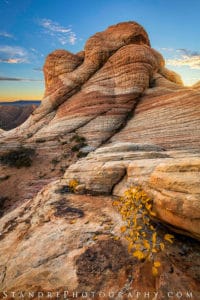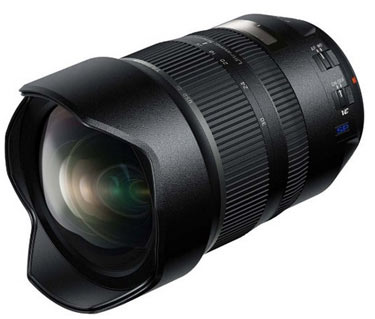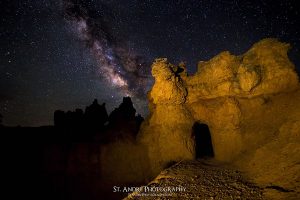Almost three years ago Jim wrote an article on the Tamron 15-30mm f2.8 lens and raved about it. That review helped me make the decision to dive into this Tamron lens. I purchased it after I almost broke my last lens in half because it fell off a cliff… that sounds more dramatic. Fell off a small 12-foot drop into a dry creek bed. Anyways, I needed a new lens. After doing a lot of reading and even test shooting with it I decided to pull the trigger.
Upon arrival, I was pleasantly surprised and really enjoyed having it around and it quickly became my primary lens and it helped produce some of my best selling images. But a year into using it my tune changed and if you read my last article you know I had issues with it that eventually led to its sell-off.
After using this lens in so many situations that few ever actually get to do, I feel like I should write a review for the landscape photographer looking to get this lens.
Pro's
Like any good review, let us talk about the pros.
Sharpness
Dang son! I really like this lens. Tamron hit it out of the park with this one. It appears to to be very sharp throughout the focal range but gets a bit soft on the 30mm range. I almost never used that mm, but when I had to it was fine. Like Jim, I echo his opinion that the 15-24mm range is by the best focal range to work with. Towards the end of the life of the lens I found myself using the 20mm range as it appeared to have the best sharpness here.
After reviewing DxO Marks sharpness graph of this lens, my review of it is about on par with theirs. I definitely agree that 15mm is insanely sharp, but my lens felt a bit sharper at 18-20mm. But That was not ever tested methodically.
So if sharpness is what you are looking for in a lens I would not worry here.

Focus
I am a landscape photographer. I probably used autofocus like 20 times in the past year with this lens out of thousands of shots taken. It seemed to work just fine. It was quick and did its job. The manual focus ring is reversed compared to Canon's lenses but that was quick to pick up on. The ring turned smoothly and never gave me grief. It was absolutely easy to get accurate focus with this ring due to its smooth build.
Color Transmission
Color transmission was fantastic on this lens. I had to battle chromatic aberration, but compared to other Canon lenses, it was fantastic. Everything looks great with this lens.
Great Astro Lens
In the grand scheme of things, there are probably few lenses that can be as all-purpose as this lens at this price point. In fact that it can go from day to night shooting is a huge benefit. I will miss that with this lens. I really will. The coma on this lens is minimal and since it is an f2.8 it sucks in a lot of light. I know a lot of astrophotographers that use this lens. If you are looking for an astro lens use this one.
Why I Left This Lens
After all that is said and done though, there are lots of lenses that have great focus, color, sharpness and so on. Most are more expensive and no doubt there are a few that are cheaper. But I eventually couldn't stand dealing with this lens after a year of working with it. I had had enough and it was time to return to my native glass for my camera.
Let's get to the nitty-gritty.
Weather Sealing
Yes, this lens is weather sealed. What it does have though is a tiny weakness. If you hold the lens and look at the huge bulbous element on the front and the structure that houses it, you will notice that it is constructed of a double lens hood. Yes, the lens hood is built into this lens. But if you focus you will notice that this front element is actually moving just a little. Because of this, it seemed as if dust could sneak its way into it. I do believe there is a rubber stopper so the dust can't go far, but I definitely noticed dust creeping into the lens itself over time. Super annoying.
Weight and Size
Physics is not in favor with this lens. The first thing you will notice with this lens is that it is heavy and big. It is 2.4 pounds and 145mm (5.7 inches). No joke you could mess someone up with this lens. Because of this, huge amounts of torque are applied to your tripod ball head when you adjust it. I fell into a ditch once and the lens nearly tore off my ball head because of the weight.
Due to the torque produced from the size, it is difficult to set the exact compositions as the tripod head tends to droop just a little unless you tighten your ball head like crazy. You see I don't own a $400 dollar ball head, I use the Vanguard ball head that comes with the tripod. I would consider myself an average ball head owner, not crazy expensive and not cheap. So if you are in the same boat as I am, you will constantly fight this. I did not deal with this with my previous lens.
Speaking of weight this lens sucks so badly to hike with. I have put close to 200 miles with this lens in my backpack. This includes small/long day hikes, multi-day backpacking trips, small walks with a kid backpack with the camera in it. I can tell you that this lens is horrible to hike with. I got so tired of carrying it on hiking trips, I would consider not taking it in my planning sometimes, but I knew that was a bad idea. As a landscape photographer who likes backcountry hiking and photographing less often seen things, I have to consider weight. This lens is too heavy for a hiking landscape photographer. If that is you, don't buy this lens. If 90% of what you do is drive up to and photograph buy this lens.
Filters
Filters are never at the top of my most important list of things to get. But I have missed having a polarizer. Want to know what a basic professional line up for a polarizer and mount to use for this lens is? It runs between $200-$400 dollars. That is just for the polarizer. Throw in one ND filter and you are easily looking at $400+ just to get a couple filters for this lens. I don't have an additional $400 dollars to drop just to get a polarizer and ND filter. My last polarizer was $90 and I was done.
This was a constant burden/issue when I was working with water. I missed having the extra stop to slow things down, I missed having the ability to amplify rainbows, I missed the ability to cut glare off of vegetation and wet rocks (I have a shot that is ruined because of this). Polarizers are exceptionally useful and the fact I could not use one was so irritating. In fact limiting sometimes. I now can get a polarizer for my new lens for about $120 and I will be ok.
Final Thoughts
Will I miss this lens? Yes, but only for the night shots. I can deal with slightly less sharp lenses (My new lens is not though). I love how crisp and sharp this lens looks. But after printing lots and lots of prints, I can say I am perfectly happy with slightly less sharp lenses. I will also miss the astro side of this lens, but I know if I can figure out stacking images I won't have any issues with my new f4 lens.
If you are a car photographer, get the 15-30 f2.8 lens. You won't be disappointed. In fact, you will be blown away by its quality. If you are a photographer that does extensive hiking, don't touch this lens, it's not worth the backache.
Do you have this lens? Did you get rid of this lens? If so tell me why and what your thoughts on it is.



Great review! A solid number of hikes in the Pacific Northwest require 1000’s of feet in elevation gain. I have a 14mm 2.8 lens and a 24-70mm 2.8 lens that I normally take on hikes. However, I do wish I had the range between those lenses. What lenses would you recommend instead of this 15-30mm 2.8 Tamron at different price points?
a 16-35 if you can pull it off.
Nathan…you nailed it on this lens. I sold this lens at the end of last year and bought the Canon 16-35 L Mark iii. I do a lot of travel and I couldn’t justify the weight or the lack of filter options. Now, with my Canon glass I can use filters I already own and not continue to spend money on my kit just to fit one lens. Tamron really outdid themselves with the quality of the lens, but the weight and filter issue for doing long exposure landscape photography will have to be addressed in a future version of this lens to keep it competitive with similar focal lengths.
So what did you go too? I am just curious to know what is lighter and worth changing. I have been looking at this lens for a while. I love the reviews that this lens has. I want to thank you for your review.
I went to the canon 16-35 f4L. It has great reviews and it is half the weight. I will then be buying in the near future the 14mm f 2.8 samyang for astro work.
First, thank you for the review. I almost bought this lens just yesterday. I am headed to Iceland and Ireland in late May and would love to know your thoughts for a good comparable lens. I own a Nikon and was looking at the Nikon 18-35mm as well.
If you don’t plan on doing a lot of hiking and using filters this is a great lens. I don’t know Nikon system well so I don’t know what you should use.
There is NO ‘right click’ on a Safari. Please remove this Improve Photography thing. Thanks.
I absolutely love my 15-30 and won’t be ditching it any time soon. The only lens I would trade this in for would be a new design of Nikon’s 16-35 f/4. The current version of that lens has horrible corner sharpness. I do hear you on the filter issuethough. I wish there were more cost effective options for filters. I’m often left using my 24-70 when I need a filter so I can’t get as wide as I sometimes would like in those situations.
I own one, use it daily for real estate work. It’s heavy, but so is anything that wide, at least on Nikon. I’ve not really had an issue with the weight personally. It does droop on a ball head in my experience but very minimally. I will be getting a geared head for this reason soon.
I do wish filters were easier, but you can replicate those big expensive filter holders for about $10-15 with some 100mm tubing and a cheap filter holder (couple of tutorials on Youtube).
If you do real estate get a manfrotto 410 you won’t be sorry
I just have to throw in the Tokina 17-35 f4 as a great option, at a great price. No, it’s not a super light gathering lens, but I love this this lens for it’s varied range for landscapes. , and it’s sharp. I’m fortunate to also have the Nikon 14-24 f2.8 as well, however, I can use the Tokina with a polarizer when needed. I still have the option of my favorite Nikon 14-24 for those critical shots and astrophotograhy.
First, thank you for the review. I almost bought this lens just yesterday. I am headed to Iceland and Ireland in late May and would love to know your thoughts for a good comparable lens. I own a Nikon and was looking at the Nikon 18-35mm as well.
I had the same issues with the Tokina 16-28 f2.8 – big, bulky and heavy. Also, as Nathan indicated, the filter situation is a mess. I bought the Fotodiox Wonderpana polarizer rig and it was a hassle – three parts to attach and more weight and space taken in my bag. Just sold all that and bought the Nikon 10-24 and a polarizer. An expensive lesson but now much tidier with native glass.